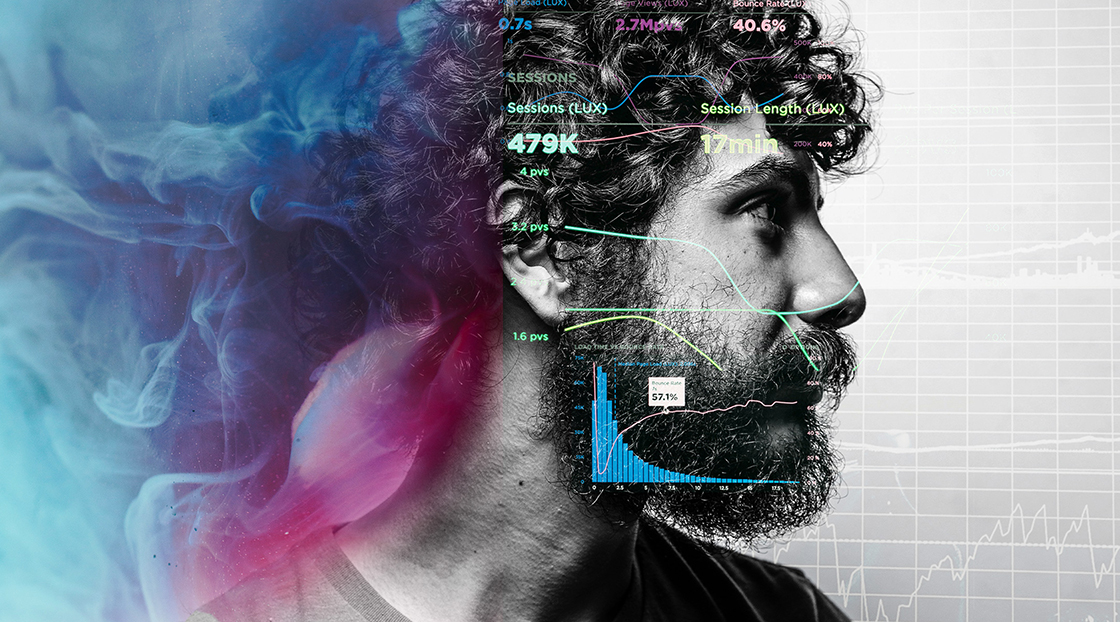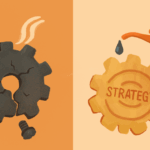Effective higher ed marketing isn’t just about delivering information—it’s about understanding how prospective students make decisions. By leveraging Daniel Kahneman’s System 1 and System 2 thinking, marketers can craft campaigns that spark immediate emotional connections while reinforcing choices with logical validation, ultimately driving engagement and conversions.
The Science of Decision-Making: Why Emotion Comes First
In “Thinking Fast and Slow,” Daniel Kahneman introduced two modes of thinking that shape human decision-making.
- System 1: Fast, automatic, emotional and intuitive
- System 2: Slow, deliberate, rational and effortful
Most decisions—including those about education—are driven by System 1 (emotion and instinct), while System 2 (logic and analysis) justifies those decisions after the fact.
This concept is further illustrated in psychologist Jonathan Haidt’s “elephant and rider” metaphor:
- The elephant represents System 1—emotional, intuitive and driven by immediate reactions. As marketers, it’s important to understand that most decisions are made emotionally and instinctively, including most purchasing decisions. In a sense, the rider defaults to the elephant–reducing cognitive overload.
- The rider represents System 2—logical and analytical, but often struggling to control the elephant. System 2 is employed when we are met with a new task or a decision that requires heavy concentration, like parallel parking.
In most cases, we let the elephant act as a guide. As Rory Sutherland wrote for Marketing Society: “With all the will in the world, the rider cannot get an elephant to do something which it does not want to do.”
Our choices have more to do with mental shortcuts and how we feel about something, instead of rationale. For higher ed marketers, your campaigns must first connect emotionally (System 1) before backing up the decision with rational support (System 2).
Designing Digital Ads for System 1: Instant Emotional Connection
“Sparks come from emotion, not information.” – Dan Heath
System 1 is the brain’s default mode, designed for quick decision-making. This is why first impressions in marketing matter more than deep details because audiences make snap judgments before engaging further. To save mental energy our brain creates automatic shortcuts (i.e., heuristics). The mind creates heuristics when it processes information and then connects that information to experiences. For example, when someone says “green,” we often think “grass.”
For higher education marketers, the quickest way to “build” a heuristic is through repetition or emotion. Both help to maintain mental networks and improve saliency and linkage within the communication during the split-second consumers give to an ad. In a sense, designing ads with System 1 in mind helps to ensure that prospective students can process our brand with little effort and create an emotive link between the brand and a proposition.
To optimize ads for System 1, higher ed marketers should focus on:
- Emotionally compelling visuals – Faces, bright colors and engaging campus scenes draw attention;
- Familiarity and repetition – A consistent logo, tagline and brand colors build instant recognition; and
- Minimal cognitive load – Simple, clear messages resonate faster than complex explanations.
If your ad sparks curiosity or connection within seconds, it’s primed for System 1 success.
Reinforce System 2 Thinking with Landing Pages
“If people want to use your brand, they will find a logical rationale themselves. But the wanting must come first.” – David Ogilvy
Once someone clicks an ad, they shift into System 2 mode—looking for logical reasons to support their initial interest. Humans are great at post-rationalizing our consumption behavior.
Facts and functional benefits help reinforce a consumer’s emotional response or act as a motivator for consumption-related goals. According to ThinkTV’s The Benchmark Series, emotion-driven ads may act as an important primer for rational ads, as a student progresses through the funnel.
Your landing page should:
- Provide credibility – Use rankings, testimonials, and stats to reinforce value;
- Maintain consistency – A disconnect between the ad and the landing page can create doubt; and
- Simplify decisions – Clear calls to action reduce friction in the decision-making process.
A useful exercise is to uncover what a prospective student might tell a friend why they applied to an institution. A school’s football team may be a key driver, but the starting salary of an engineering graduate or an internship pipeline is a stronger reinforcement.
By aligning the emotional appeal of your ad with the rational validation of your landing page, you increase conversions.
5 Ways to Align System 1 and System 2 Thinking in Higher Ed Marketing
1. Design for Distinctiveness
If System 1 thinking relies on quick recognition, making your brand visually distinctive is key. Investing in consistent brand elements—like logos, colors and design aesthetics—ensures prospective students build a strong mental association with your institution. If they remain consistent from ad to landing page, the more likely these elements will become coded into memory.
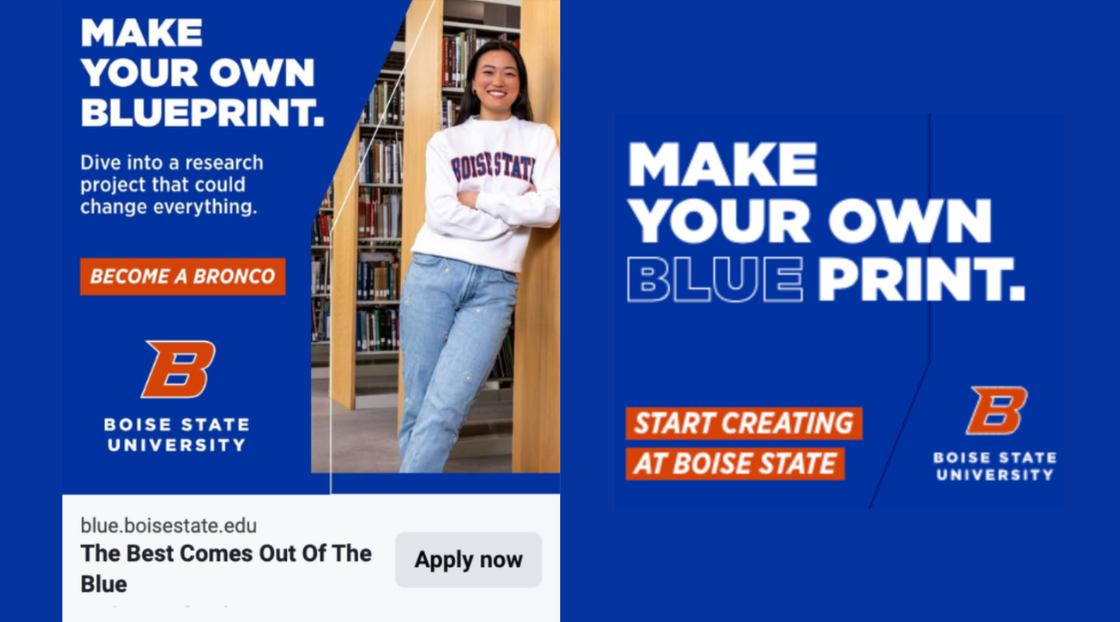
Boise State has successfully tied its brand identity to the color blue, specifically its distinctive blue turf. This branding extends beyond athletics into marketing campaigns, reinforcing the university’s distinctiveness. By integrating brand cues like the blue jacket in their ad campaign (below), Boise State ensures quick brand recall, so messaging can focus on engagement rather than recognition.

2. Build Memory Structures
Emotional responses shape long-term memory and influence brand connections. These responses, or memory structures, are what tie emotion and feelings to a brand and are more likely to move to memory.
Coca-Cola has invested billions linking both its name and brand assets to happiness. We can see this effort when their ads feature moments that spark happiness — mostly around food and a Coke playing a supporting role. The more these moments are repeated, the more likely we are to think about Coca-Cola when making a purchase decision related to moments around food.
Since higher ed marketing is about selling an improved quality of life, aligning branding with strong emotional drivers helps cement the institution in a prospective student’s mind.
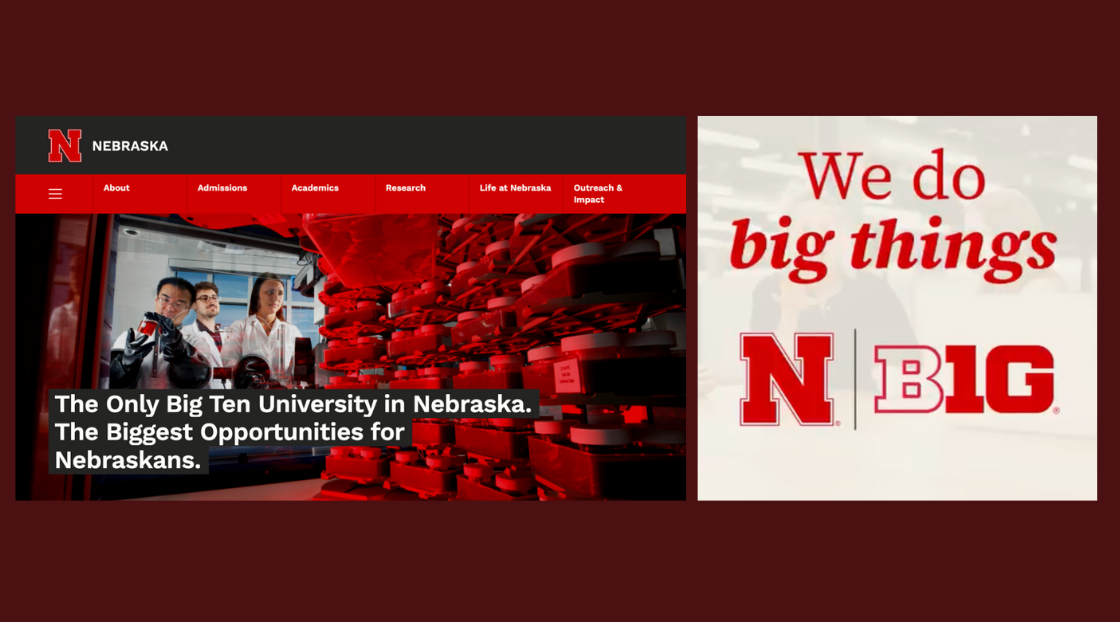
Nebraska’s “Big Things” campaign plays on the Big Ten branding, reinforcing size, strength and academic excellence. By consistently pairing an aspirational benefit (academic prestige) with an emotional driver (belonging to something “big”), the campaign strengthens memory recall while addressing concerns about university size or fit.
3. Create an Intuitive Link Between Brand and Jobs to Be Done
A landing page’s primary image should tell a clear story that bridges a prospective student’s problem to the solution your institution provides. If your primary message is that your students have the opportunity to create real-world impact, your image should reflect this impact. Because images are processed quickly, choosing the right visual can embed brand cues and reinforce key connections.

National University’s ad campaign uses images of students that mirror the audience it seeks to attract. By visually aligning its marketing with the promise of comprehensive student support, the university creates immediate congruence between the ad and landing page—reinforcing the solution students are seeking.
4. Use a Benefits-Driven Headline and Action-Oriented Subhead
When a prospect moves from an ad to a landing page, they are scanning for patterns and deciding where to focus. Cohesion and simplicity are important. A clear, benefit-driven headline answers their key question, while an action-oriented subhead guides their next step.

Purdue Global’s landing page headline—“Make the comeback you’ve always wanted”—highlights its core value proposition. The supporting subhead then guides users toward finding the right program, reducing cognitive friction and making the decision process more intuitive.
5. Provide Social Proof
Humans rely on social proof to validate their decisions. There is a powerful desire to fit in and the quickest way to learn a behavior is to observe the crowd.
Testimonials on landing pages are a common practice. Instead of simply listing testimonials, effective marketing aligns student stories with brand benefits, reinforcing key memory structures and congruence with ad messaging. Use the testimonial to reflect your typical student and provide a powerful quote that emotionally communicates your benefits, not necessarily repeating your value proposition.
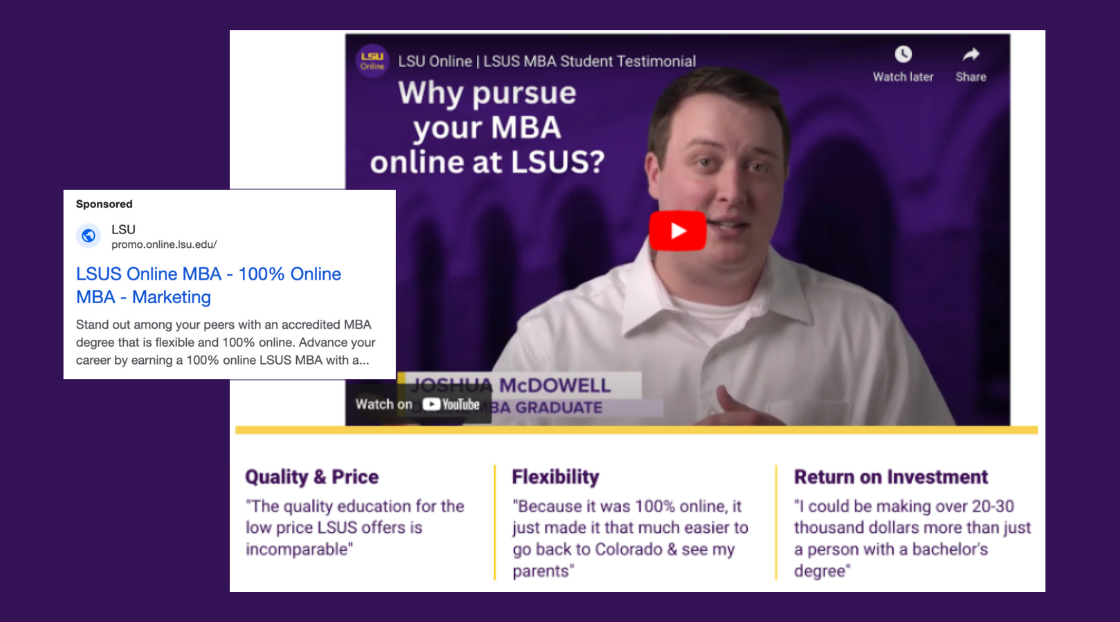
LSU strategically integrates student testimonials that reflect its core value proposition. By featuring authentic student experiences in video form, the university engages System 1 (emotion), while reinforcing key features below the video to engage System 2 (rational decision-making)—creating a seamless, persuasive user experience.
The Key to Higher Conversions: Blending Emotion and Logic
To guide prospective students toward enrollment, higher ed marketers must first engage emotions (System 1) before reinforcing decisions with logic (System 2).
By creating ads that connect instantly and landing pages that provide rational validation, you help students feel confident in their choices—leading to higher engagement and conversions.
Newsletter Sign up!
Stay current in digital strategy, brand amplification, design thinking and more.
